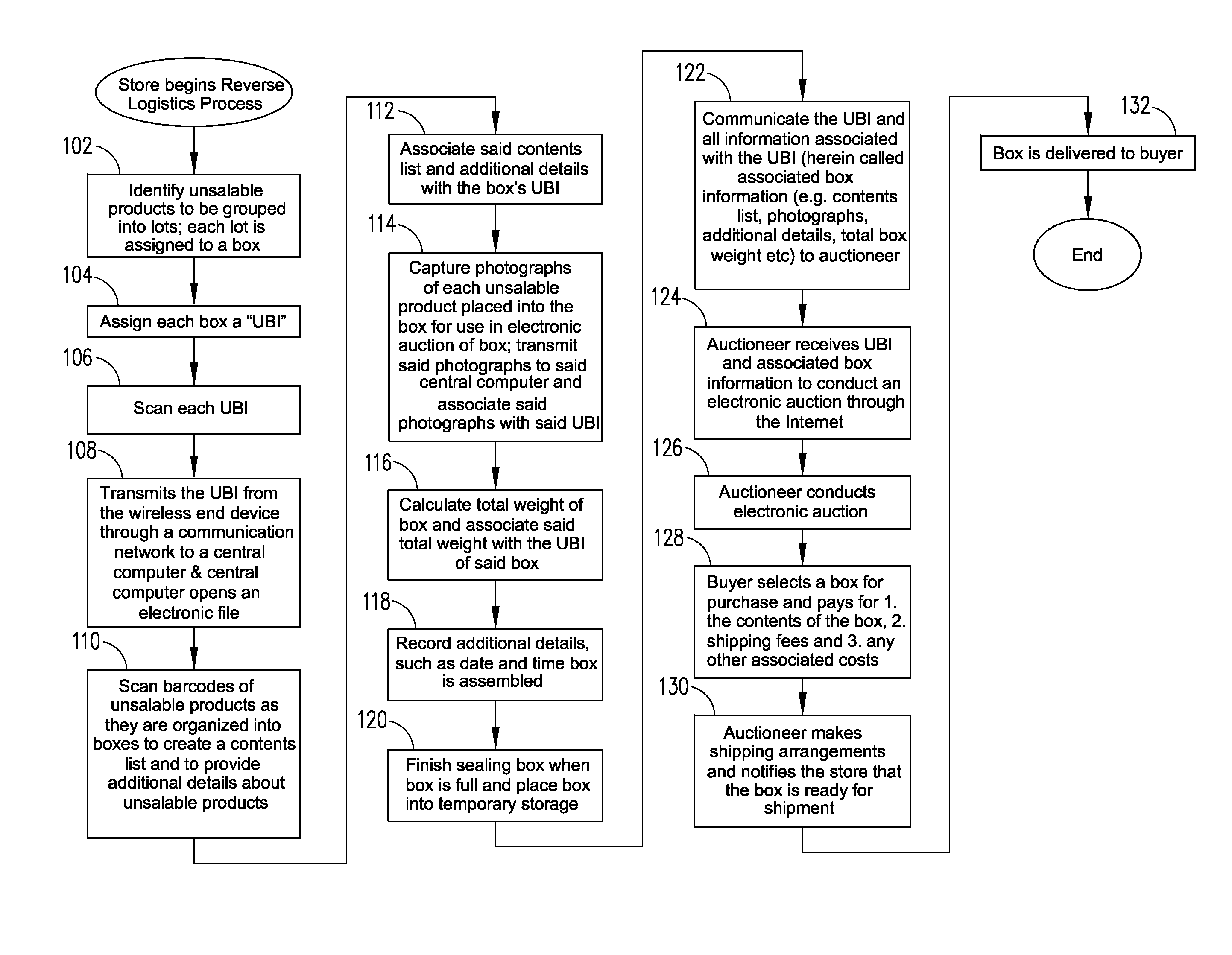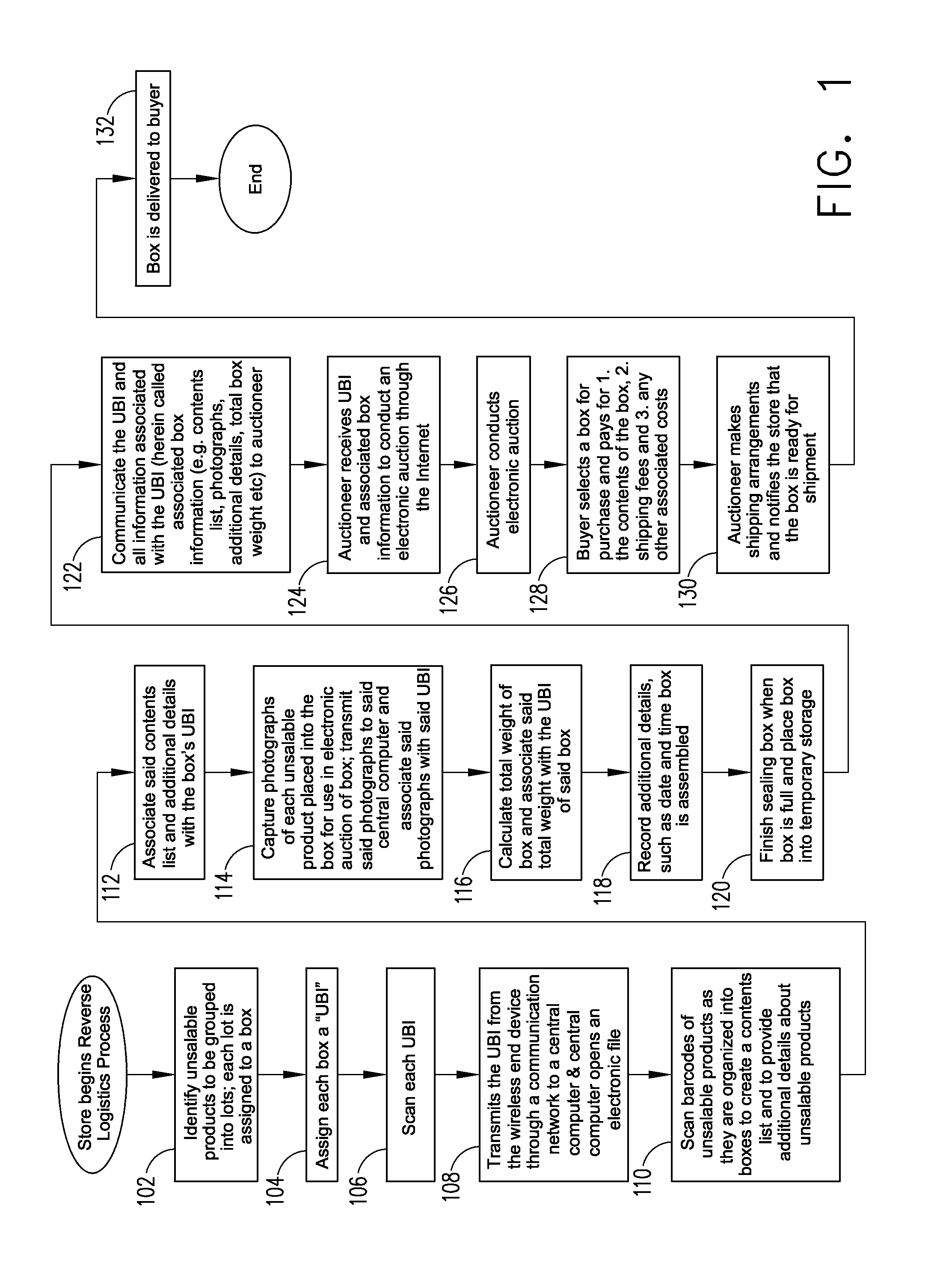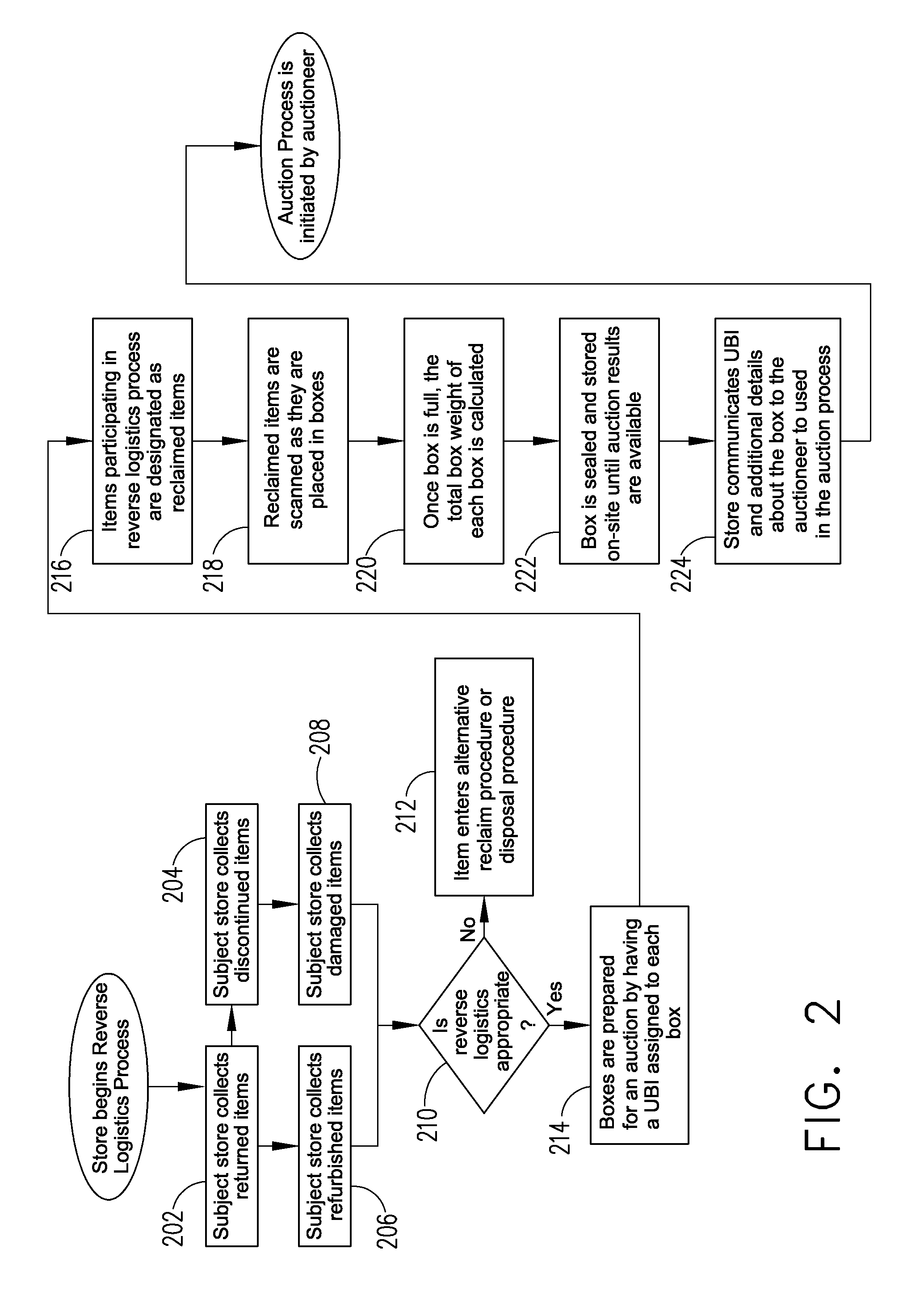Method of Direct-to-Consumer Reverse Logistics
a reverse logistics and direct-to-consumer technology, applied in the field of reverse logistics, to achieve the effect of eliminating the associated expens
- Summary
- Abstract
- Description
- Claims
- Application Information
AI Technical Summary
Benefits of technology
Problems solved by technology
Method used
Image
Examples
Embodiment Construction
[0032]The exemplary embodiments disclosed herein provide reverse logistics methods for retailers to standardize packaging, locate unsalable products, sell auctionable products to consumers directly from the retail establishment, and ship substantially unsalable products from a store, rather than ship the substantially unsalable products to one or more middlemen, consequently making reverse logistics more efficient. Thus, as used herein the term “unsalable” refers to items for consumer use typically sold in a retail channel that for one or more reasons are no longer salable in the retail channel and / or are eligible for sale outside of the retail channel. An example of an unsalable product is a product that is close to or has passed its due date for retail sale. Another example of an unsalable product is a product that may continue to be sold in its original retail channel but that its manufacturer or retailer determines is a suitable candidate for treatment or re-sell through reverse...
PUM
 Login to View More
Login to View More Abstract
Description
Claims
Application Information
 Login to View More
Login to View More - R&D
- Intellectual Property
- Life Sciences
- Materials
- Tech Scout
- Unparalleled Data Quality
- Higher Quality Content
- 60% Fewer Hallucinations
Browse by: Latest US Patents, China's latest patents, Technical Efficacy Thesaurus, Application Domain, Technology Topic, Popular Technical Reports.
© 2025 PatSnap. All rights reserved.Legal|Privacy policy|Modern Slavery Act Transparency Statement|Sitemap|About US| Contact US: help@patsnap.com



